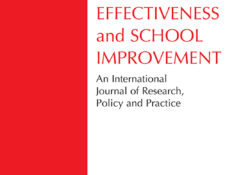Eric.ed.gov – A Year in the Life: Two Seventh Grade Teachers Implement One-to-One Computing
eric.ed.gov har udgivet: Maine was the first state to put laptops in the hands of an entire grade of students. This interpretive case study of two middle school science-math teachers was driven by the general question: Given ubiquitous computing, how do teachers use computers in constructing curriculum and delivering instruction? Specifically, the researchers sought to examine the facilitators and barriers for teachers in using laptops in the classroom. Using qualitative methods, the researchers collected data during the first year of the Maine Learning Technology Initiative (MLTI). Differential effects of one-to-one computing on each teacher were found along two dimensions: the effect of technical technological issues, and the educational effect of technology policies. For both teachers, the effects were deeply altered by the teachers’ beliefs about teaching and learning, which in… Continue Reading
